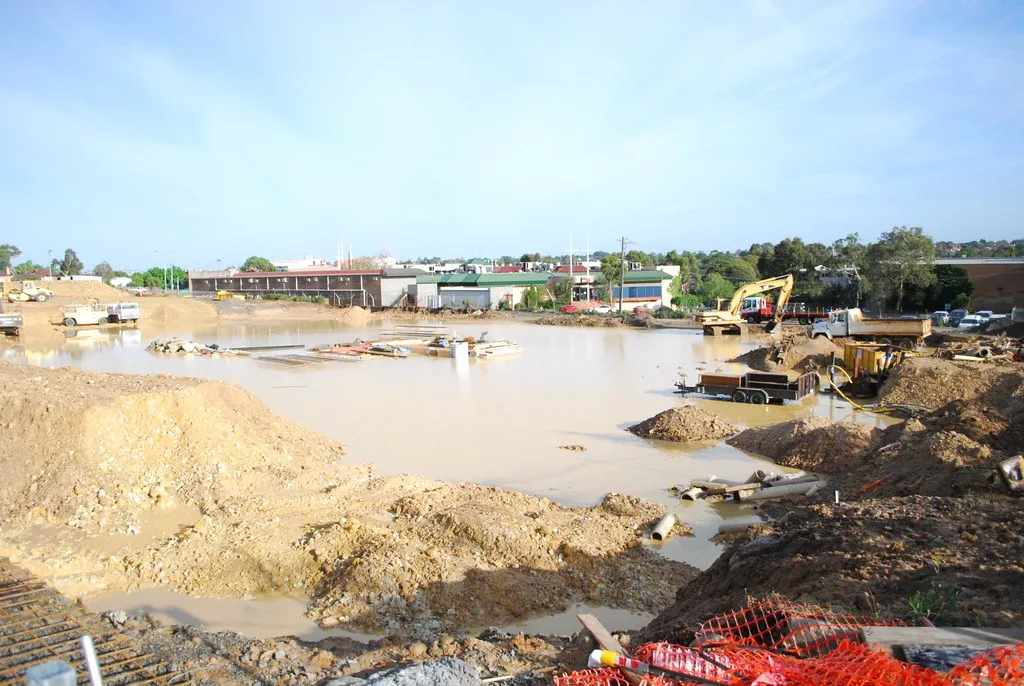Inclement weather can seriously delay construction projects. Many only see weather disruptions as the direct time lost during bad weather, but as we have seen with the wild weather and flooding of the past 12 months, inclement weather can cause more delays than the couple of hours during the downpour.
While there are many reasons a construction project could be delayed, inclement weather, especially in QLD, is a large factor.
Recovering from an hour of rain could take days while work areas are pumped dry, debris are cleaned away and materials dry out.
Tradies and Subcontractors are an eternally optimistic bunch and don’t always consider the effects of weather on their construction project. But we all know we’ve never seen a straight 12 months without rain, winds and minor flooding at some point!
If you have 600mm of rain in 3 months, it’s going to disrupt your project. But if the project location averages 600mm of rain for those 3 months of the year typically, then it shouldn’t be a surprise, and there should be an allowance for it.
So, how can you protect yourself from the delays caused by inclement weather on your construction project?
How does inclement weather affect your construction project?
Many only see inclement weather disruptions as the direct time lost during bad weather. This is not always the case though, as some events cause damage that could take days or weeks to repair.
- Rain:
- Stops work due to discomfort and safety. Once you have a roof this becomes less of a problem, but while you are working in open air, wet weather will quickly have you packing up site for the day.
- Causes damage to finishes open to the elements. Excavations can collapse, silt and debris have to be cleared.
- Saturates materials. Particularly with earth moving, but other materials exposed to the elements may take days to dry out too.
- Could make site access roads impassable, and machinery can get bogged.
- Floods work areas, requiring pump out and cleanup, and potentially causing damage.
- May cause local rivers to flood, which often peak days after the weather event, and add days of delays.
- Wind:
- Prevents crane lifting materials due to safety.
- Can blow down partially completed work that has not been braced properly.
- Can blow in dust requiring cleanup before some work recommences.
- Extreme heat
- Means giving workers more breaks to keep them keep cool and hydrated.
- If not managed properly can have workers lose time due to heat stroke.
Protecting your construction project from inclement weather
So, how can you protect yourself from the delays caused by inclement weather on your construction project?
During the tender stage
Take time to understand the expected weather conditions at the project location. Also take time to understand the contract you will be entering into. Understand what it says about the risks of inclement weather and in particular severe weather conditions. Put room in your program for delays from expected weather conditions.
Allow for the costs and delays of normal weather patterns, and be up-front in discussing issues relating to weather with your client.
Consider alternative construction methodologies, like redesigning structures or manufacturing parts of the structure off-site to reduce the work that has to be done in poor weather. Consider different foundation options that minimise excavations.
Use estimating software that is flexible enough to allow for these delay allowances, or construction software with a good estimating module that does the same thing.
During Construction
Prepare your site for severe weather when you know it’s coming. Ensure loose materials are secured, partly completed structures are properly braced, and any unfinished work is protected from damage. Check your stormwater drains to make sure they are clear.
Use a tradie diary app to note down weather conditions on-site, so you can easily produce EOTs and NODs when you need to.
Make sure your temporary roads are protected. A few extra $ spent here on recycled roadbase or similar will ensure you can get back onto your site as soon as rain has stopped, instead of waiting days for your access road to dry out.
If you’re on a site where you know you will have to pump out water if heavy rain comes, prepare for this. Hire the gear in anticipation of the weather, instead of after the weather event when the hire companies have no stock.
Is it feasible to put tarps on the ground to protect your site from rain? It doesn’t always make sense, but in some cases a few tarps could save you days of delays.
Consider the weather risks to activities happening off-site. Off-site manufacturers may also be affected by the weather event as well. Will your supplier be able to continue manufacturing in poor weather?
Finally, consider what materials might be hard to get after severe weather event, and plan ahead, ordering early.
Are your part of a Trade Buying Group? A Buying Group gives you access to better pricing, but it also gives you access to a network of similar businesses who can trade amongst their selves when materials are short.
Conclusion
You can pretty much guarantee that your project, if running more than a few months, will be affected by inclement weather.
We can prevent or at least mitigate many of the delays associated with this by understanding the weather patterns in the area, and planning accordingly, both during the tender stage, and during construction. Be careful accepting a contract that makes you liable for extreme weather events. Use good estimating software or construction software that allows you to factor in weather delays, and use a tradie diary app to note weather conditions on-site so you have the info when you need it. Join a Trade Buying group if it makes sense for you.


Leave a Reply